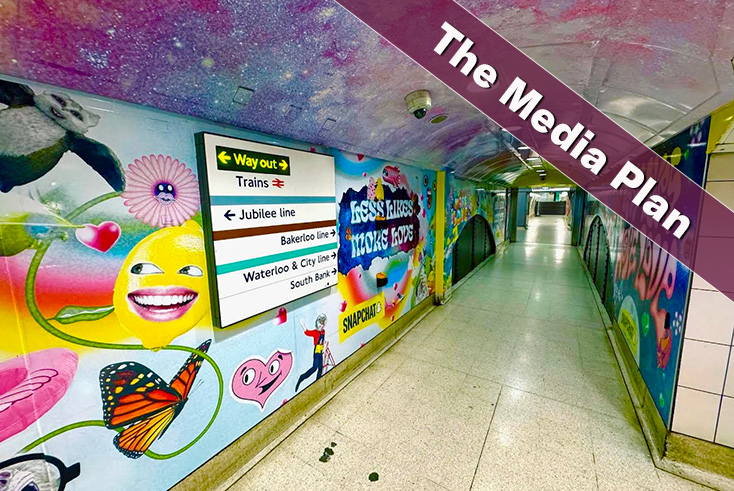How Snap designed a media plan to counter ‘negative experience’ on social

The Media Plan
Earlier this year, Snap launched a prominent campaign aimed at putting a more positive spin on the Snapchat brand compared with its competitors in the social media space.
The “Less Social Media, More Snapchat” campaign aims to reflect the relatively positive experience of users on the platform in relation to rivals.
While the campaign was wide-reaching globally, including a spot during the Grammy Awards, the UK iteration received a media plan tailored to the localised needs of the brand.
“We wanted to show up in places that would allow us to directly counter the negative experience that so many people in the world were having,” Kate Bird, EMEA senior marketing director at Snap, told The Media Leader.
“This translated into [OOH] in key spots throughout London and Manchester — in particular, as people were waiting for the Tube, and in Facebook and Instagram feeds via paid promotion, through our SnapCHATS content series, and through our partnership with Print Club London to mark International Friendship Day.”
Independent agency Undercover Arts was commissioned for planning and buying across OOH sites in the UK.
Targeting advertisers, parents and non-users
According to Bird, Snapchat’s challenge among non-users is that the platform is “often misunderstood” and “bucketed in with social media”.
This is despite Snapchat being both a form of communication and inherently social, especially through its various messaging tools. Snapchat also plays host to a short-form video feed, Spotlight.
Notably, the tech company revealed last week at its Partner Summit that Snapchat is undergoing a major redesign to simplify the user experience, moving from having five tabs to just three: one for messages and stories from friends, one for the camera and one for Spotlight’s For You feed.
The first tab — encompassing messaging and direct interaction between friends — is at the centre of Snap’s brand push. For example, Bird cited 2022 research that found Snap was ranked the “happiest” social platform in part because of the app’s focus on facilitating messaging with friends and family.
“Our media plan was designed to get this simple, punchy message in front of audiences who don’t use the platform,” Bird explained.
Hence, Bird said OOH was used a linchpin for the campaign, with “vibrant” creative placed in “idle, public moments where we could contrast ourselves with the experience we knew that most people were about to have, on their phone and seeking out distraction”.
Tube stations were selectively picked to target both consumers as well as business and advertising leaders.
Apart from OOH sites, Snap and Undercover Arts painted a mural next to Shoreditch House, a popular club frequented by ad industry leaders. In addition, they created two “tunnels of love” at London Bridge and Waterloo stations in support of International Friendship Day on 30 July.
“We wanted broad reach in London and Manchester so that our message had salience among key audiences of parents and advertisers,” Bird said.
Positive brand uplifts
In addition, Snap paid for a six-second ad placement on Meta’s platforms to target the 24-54 demographic, with a message aimed at showing a distinction between Meta and Snap.
Bird said Snap has measured the success of the campaign by assessing brand-uplift metrics. She told The Media Leader favourability towards Snapchat has improved since the campaign’s launch, as has “reducing perception of association with social media”.
An additional advertiser perception survey run by Snap showed that exposure to the campaign also led to higher awareness and consideration of the Snapchat brand and product, she added.
Bird said: “I’ve been so encouraged by parents, advertisers, friends and colleagues who have seen the campaign and spoken so positively about it, and the impact it has in playing a role to connect people and fuel relationships — both online and offline.”
Social media companies don’t want to be ‘social media’ any more




